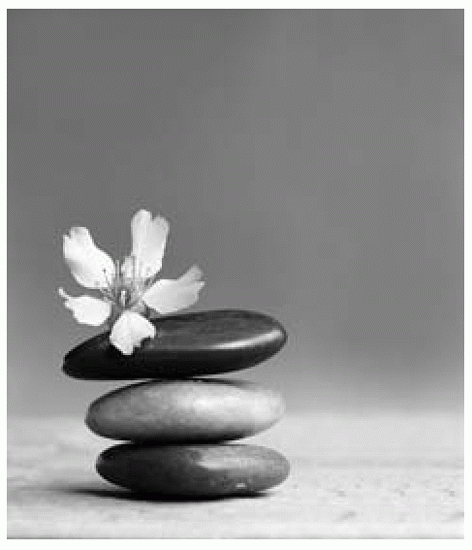|
Learn the definitions of relaxation and selfregulation.
Compare and contrast different relaxation exercises.
List the body-mind-spirit changes that accompany profound relaxation.
Describe three different types of relaxation exercises and their appropriate clinical application.
Describe the indications and contraindications for two forms of relaxation practice.
Identify commonly used technology or equipment from your nursing practice, and describe how it can be used as a biofeedback device.
Use breathing strategies with a client, and record the subjective and clinical changes that occur with relaxed breathing.
Pick one or a combination of relaxation and/or meditation practices and apply them to a stressful moment. Explore the ways they support your well-being and how they affect your ability to transform stress.
Identify through focused awareness areas in your body where you most often accumulate tension.
Identify three personally meaningful therapeutic suggestions, and use them as reminders to support your self-care relaxation practice and well-being.
Unfortunately, the conditioning in place makes this activity more the exceptional experience than the norm, thereby leading to the development of stress-related illnesses (which account for 75-80% of illness in modern life).
Decreases the anxiety accompanying painful situations, such as debridement or dressing changes
Eases the muscle tension pain of skeletal muscle contractions
Decreases fatigue by interrupting the fight-or-flight response
Provides a period of rest as beneficial as a nap
Helps the client fall asleep quickly
Increases the effect of pain medications
Increases ability to tolerate pain
or grows the brain.3 Practitioners of biofeedback include relaxation practice with their therapy to help clients learn to self-regulate their peripheral temperature, heart rate velocity, muscle activity, and brain wave frequencies.
Decreases pain
Decreases anxiety
Improves immune system function
Quiets the fight-or-flight sympathetic response
Facilitates sleep
Provides rest
Increases efficacy of pain medications
Reduces muscle tension and increases blood flow
Improves sense of well-being
Offers insight and creativity
Is an essential element of self-care
Cultivates a centered, calm presence
As a self-care practice offers insights into challenges and benefits clients will experience
Offers a vehicle to modulate and self-regulate the nurse’s own stress response in stress-filled work settings
Supports a therapeutic energetic bond and connectedness when practicing along with clients or colleagues
Creates opportunity for intuitive exploration, insight, and understanding of self and others, issues, and problems
Is an excellent vehicle for beginning professional gatherings and staff meetings; offers opportunity to be present, creative, open, and connected
Can be done anywhere, without any cost or equipment, is easily teachable, and easily practiced
Can be a spiritual practice for opening ourselves to deeper ways of being
Constriction of blood flow to the hands and feet (cool extremities)
Tightening of the muscles
Constriction of one’s energy field (closing down or blocking flow)
Increased heart rate
Increased oxygen consumption
Increased brain wave activity
Increased sweat gland activity
Increased blood pressure
Increased anxiety
do people not know how to relax, but our society typically has a negative view of relaxed people.
Deep relaxation increases
Peripheral blood flow (warm extremities)
Electrical resistance of skin (dry palms)
Production of slow alpha waves
Activity of natural killer cells (improved immune function)
Deep relaxation decreases the following functions in the body:
Oxygen consumption
Carbon dioxide elimination
Blood lactate levels
Respiratory rate and volume
Heart rate
Skeletal muscle tension
Epinephrine level
Gastric acidity and motility
Sweat gland activity
Blood pressure, especially in hypertensive individuals10
elements of the relaxation response have been elicited within a religious context in cultures around the world.
TABLE 16-1 Research-Based Outcomes of Meditation | |||||||||||||||||||||||||||||||||||||||||||||||||||||||||||||||||||||
|---|---|---|---|---|---|---|---|---|---|---|---|---|---|---|---|---|---|---|---|---|---|---|---|---|---|---|---|---|---|---|---|---|---|---|---|---|---|---|---|---|---|---|---|---|---|---|---|---|---|---|---|---|---|---|---|---|---|---|---|---|---|---|---|---|---|---|---|---|---|
|
|
|
meditation cushion (zafu) or a regular pillow folded in half to create a supportive lift under your buttocks. If you are sitting on the floor, find a comfortable way to place your legs, either (1) crossed in lotus or half-lotus position with or without pillows under your knees, (2) Indian style, or (3) straight out in front of you, with a pillow under your knees and your back supported against a reclining support or against the wall. Focus on a point on the floor in front of you and gently lower your lids until they are almost closed. Gently bring your attention to your breath.
|
|
|
|
Stay updated, free articles. Join our Telegram channel

Full access? Get Clinical Tree



